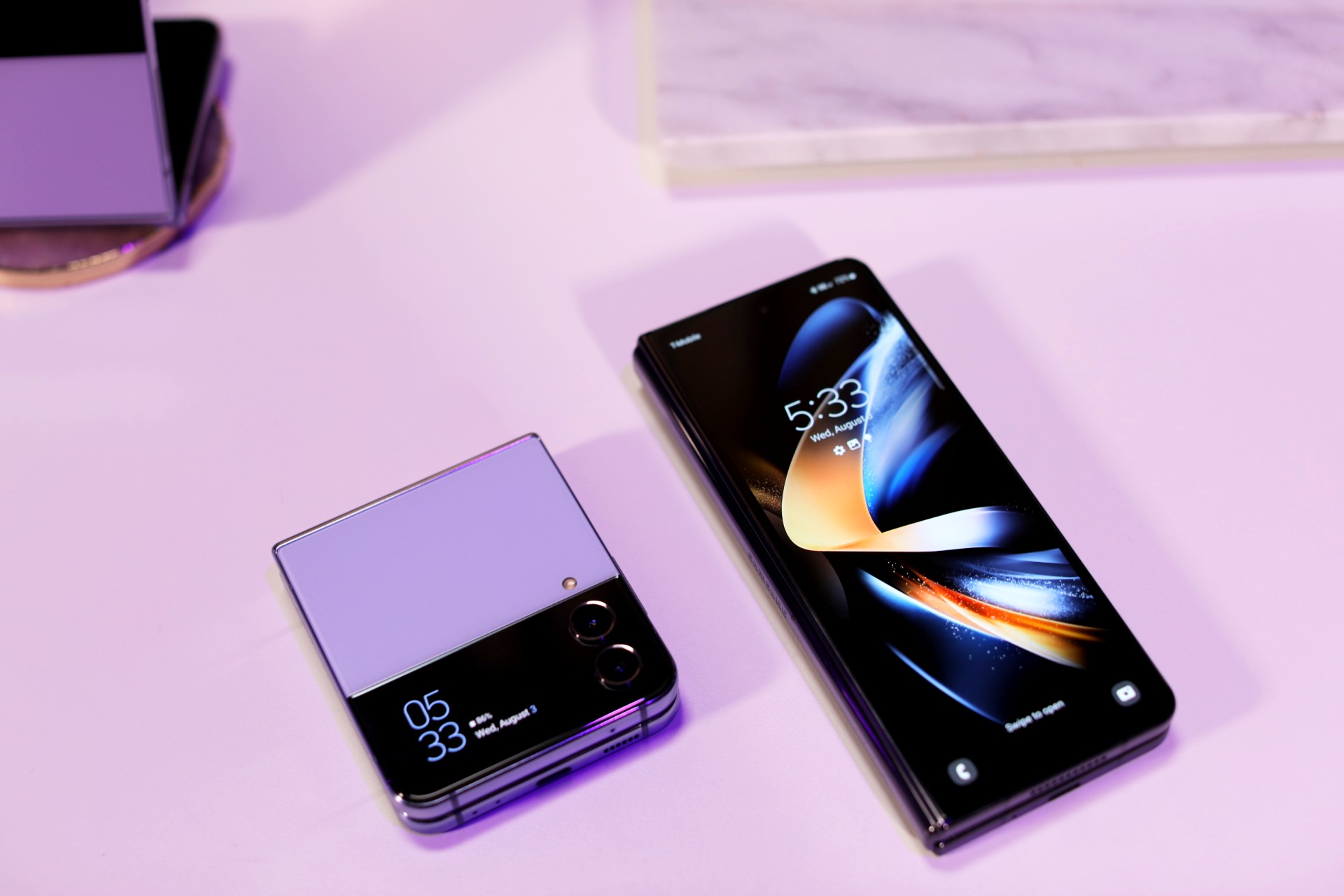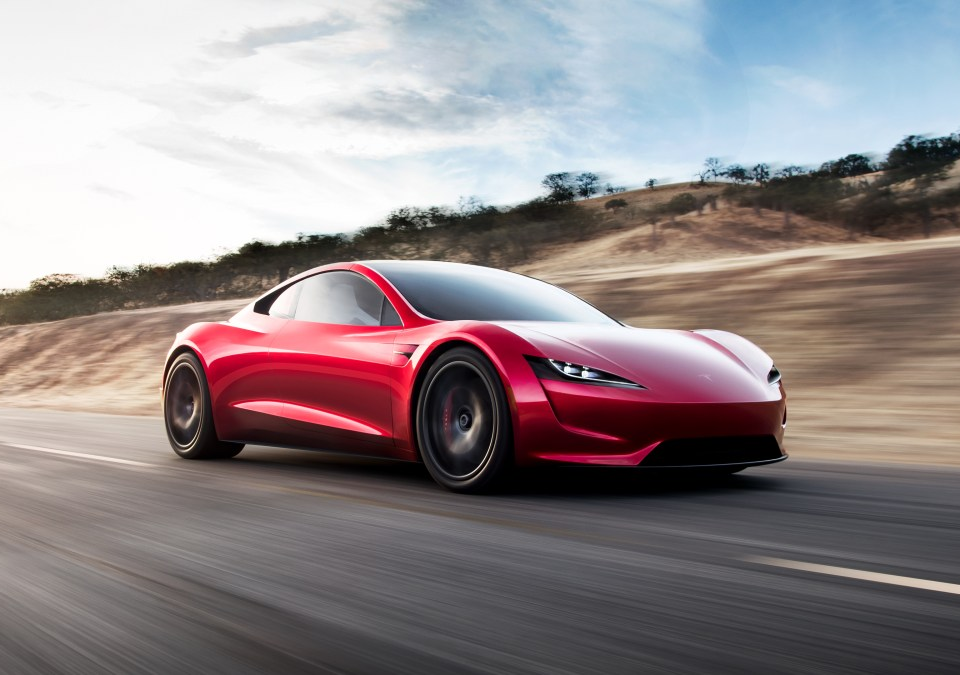
Samsung Galaxy Pro 2 feature a smaller design, improved sound
August 16, 2022
Hyundai announces $400M AI, robotics institute powered by Boston Dynamics
August 17, 2022
Over the past year, Samsung recognized something we’d known all along: The clamshell form factor makes sense. It’s something those of us who are old enough to remember a pre-smartphone era are wired to appreciate. It’s small, it fits in your pocket, it opens up and gets bigger.
That’s not to take away from the impressive bit of engineering that is the Galaxy Fold. It’s more that the current state of foldable production means that the “space saving” design of Samsung’s ur-foldable still results in what is effectively a big, heavy object. The first time I reviewed the Galaxy Flip was the first time I could legitimately imagine myself owning one of these devices. Not to mention the fairly significant price gulf between the two.

Image Credits: Brian Heater
Today at its twice-yearly Unpacked smartphone event, the company unveiled the latest additions to its foldable line, the Galaxy Flip 4 and Galaxy Fold 4. Together, the two devices have taken the secondary flagship spot formerly reversed for the Note, before that line was effectively absorbed in the Galaxy S.
For the first time, however, Samsung has effectively flipped the billing of the Fold and Flip, giving the latter the top spot in today’s big announcement. Among other things, it’s a tacit acknowledgement that the clamshell is a step closer to the sort of mainstream adoption the company has been hoping for. And to its credit, Samsung appears to be getting there more quickly than many suspected.

Image Credits: Brian Heater
As mobile head TM Roh recently announced, “Last year, we saw almost 10 million foldable smartphones shipped worldwide. That’s an industry increase of more than 300% from 2020, and I predict this fast-paced growth will continue.” Perhaps even more notably, those numbers were — far and away — driven by the Flip. Per the company, 70% of consumers expressed a strong preference for that form factor over the Fold’s.
Four generations in, the foldables have reached the refinement stage of smartphone development. The first few products were about getting things right and ironing out some — let’s just say — early bugs with the devices. Now the company is responding to consumer feedback with the products out in the world in far more hands and offering a similar feature upgrade cadence as other flagship smartphones.

Image Credits: Brian Heater
It also needs to be acknowledged that — more most intents and purposes — Samsung in currently the only game in town when it comes to foldables. Huawei’s promising efforts were curbed when the company found itself in the crosshairs of a superpower trade war, while the reminder of the currently available foldable devices don’t come close to touching Samsung’s dominance. Another company or two are going to have to come out strong if there’s any hope of competition meaningfully impacting the Galaxy devices’ approach.

Image Credits: Brian Heater
I’ve played around with the products a bit — exclusively in the context of taking the photos you see in this piece. Obviously that’s not enough time to give a proper reviews of the products, but I will say, at the very least, I don’t see enough here to justify even deep-pocketed users to upgrade from the third-generation devices. On the whole, the updates are more about keeping the products current.

Image Credits: Brian Heater
Top-level, that means bringing the Snapdragon 8+ Gen 1 to both products. For the Galaxy Z Flip 4, it’s upgrading the battery from 3,300 to 3,700 mAh — that’s a decent life, but keep in mind, the product effectively needs to split the battery in two pieces, until non-exploding folding smartphone batteries are a viable option. Super Fast Charging, meanwhile, delivers a 50% charge in around half an hour.
The Flip 4 maintains its predecessor’s 6.7-inch display at 2640×1080, with a 120Hz refresh rate. The camera, meanwhile, gets a bump, thanks in part to some of the ISP improvements to the chipset, coupled with improved brightness on the camera’s hardware sensor. Most of the other updates to the device come in the form of software refinement, including a partnership with Meta that brings added Instagram/WhatsApp/Facebook functionality to the little 1.9-inch/250×512 display. One of the more fascinating things to watch at this stage in the devices’ evolution is the new uses app developers are building based on these unique form factors.

Image Credits: Brian Heater
The Z Fold 4, meanwhile, becomes the first device to ship with Android 12L, the new mobile OS fork created in collaboration with Samsung. New software features include improved multitasking, with the ability to switch between split-screen and pop-up window views. Microsoft Office, Chrome and Gmail all get improved experiences on the device, bringing functionality more inline with what you’ll get on a tablet. Per Samsung:
Samsung’s partnerships with Google and Microsoft take multitasking to the next level and give executives and business owners space to see more and do more. Google apps, including Chrome and Gmail now support drag-and-drop, allowing users to quickly copy and paste links, photos and more from one app to another. With Google Meet, users can now connect with more people while enjoying virtual co-activities, including co-watching videos on YouTube or playing games together on a video call. Microsoft’s full Office suite and Outlook take advantage of the large cover screen that unfolds to reveal a tablet-like experience. The foldable display provides more information on the screen, so users can view documents side by side for efficient multitasking that makes it is easy to work on a spreadsheet or presentation. With Microsoft integration, everyone has access to important files from anywhere.
This also includes improved S Pen support for productivity apps like Office.

Image Credits: Brian Heater
The 7.6-inch (2176×1812) main display is now brighter and sports a 120Hz adaptive reresh rate, while the under-screen display is harder to detect (I’ve yet to test it, but I suspect the quality is still rough with this technology). The primary rear-facing camera features an upgraded 50-megapixel lens, coupled with Samsung’s 30x space zoom.
The company continues to improve on the product’s build, with Armor Alminum frames and hinges, coupled with Gorilla Glass Victus+ on the outward-facing displays. Both are also rated IPX8 water resistant — the hinges still seem to be a bit of an issue when it comes to getting a dust-proof rating.
Both are up for preorder starting today, and will go up for sale on August 26. The Z Flip starts at $1,000 for 8GB of RAM and 128GB of storage. The latter is upgradable to 512GB. The Z Fold starts at a considerably pricier $1,800 for 12GB of RAM and 256GB of storage (upgradable to 1TB).



